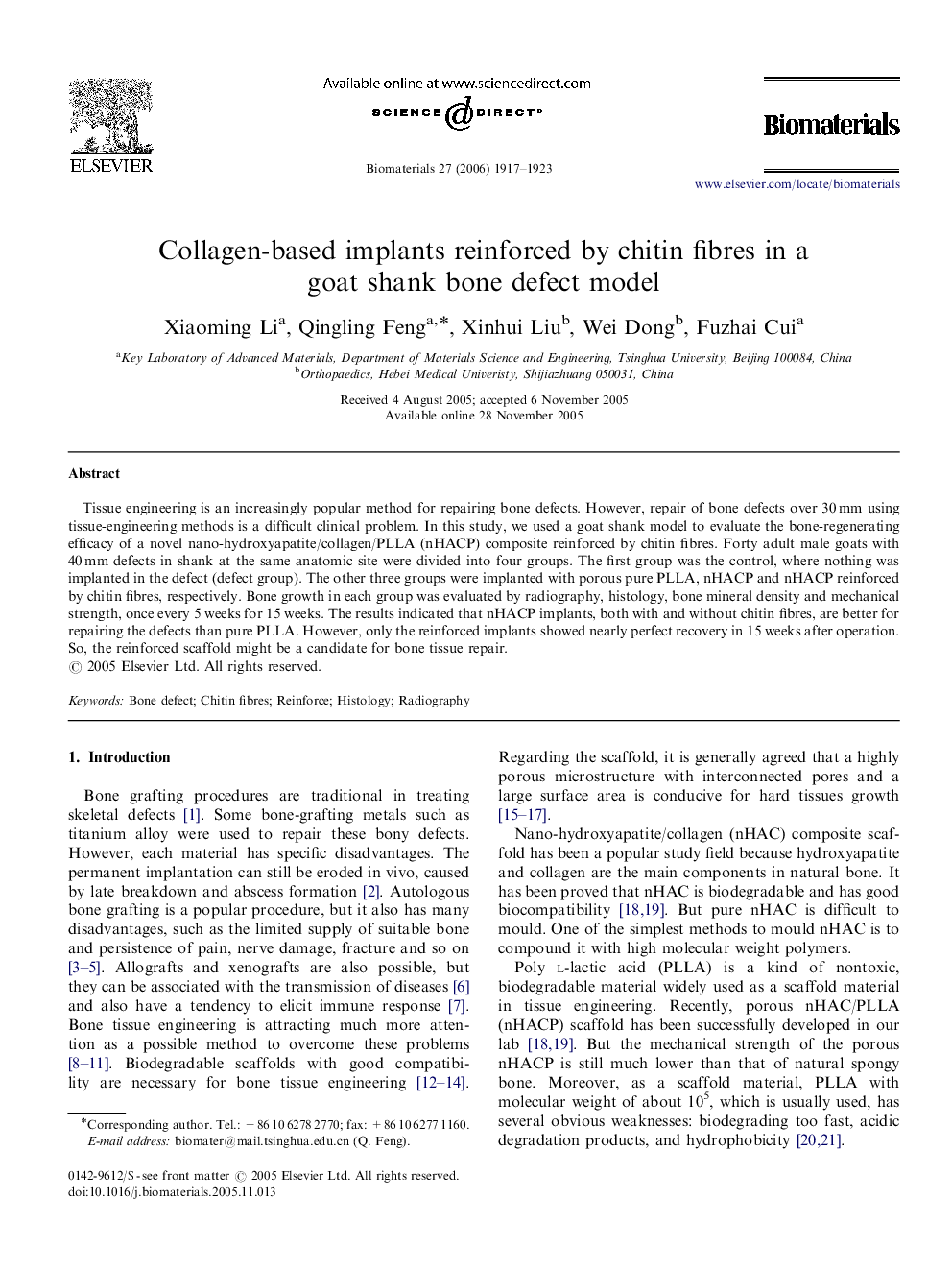| Article ID | Journal | Published Year | Pages | File Type |
|---|---|---|---|---|
| 10783 | Biomaterials | 2006 | 7 Pages |
Tissue engineering is an increasingly popular method for repairing bone defects. However, repair of bone defects over 30 mm using tissue-engineering methods is a difficult clinical problem. In this study, we used a goat shank model to evaluate the bone-regenerating efficacy of a novel nano-hydroxyapatite/collagen/PLLA (nHACP) composite reinforced by chitin fibres. Forty adult male goats with 40 mm defects in shank at the same anatomic site were divided into four groups. The first group was the control, where nothing was implanted in the defect (defect group). The other three groups were implanted with porous pure PLLA, nHACP and nHACP reinforced by chitin fibres, respectively. Bone growth in each group was evaluated by radiography, histology, bone mineral density and mechanical strength, once every 5 weeks for 15 weeks. The results indicated that nHACP implants, both with and without chitin fibres, are better for repairing the defects than pure PLLA. However, only the reinforced implants showed nearly perfect recovery in 15 weeks after operation. So, the reinforced scaffold might be a candidate for bone tissue repair.
